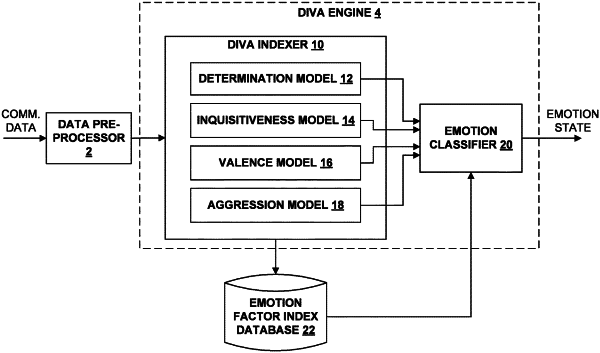| CPC G06Q 30/0201 (2013.01) [G06F 18/2431 (2023.01); G06N 20/00 (2019.01)] | 20 Claims |

|
1. A computing system comprising:
a memory; and
one or more processors in communication with the memory and configured to:
train each machine learning model of a set of machine learning models included in an emotion-based indexer based on a first set of training data, wherein each machine learning model is trained to determine a measure of a different emotion in customer communications as a different emotion factor value;
apply communication data of a given customer communication associated with a customer to the emotion-based indexer;
generate, as output from the emotion-based indexer, a set of emotion factor values for the given customer communication, wherein the set of emotion factor values comprises a determination value for the given customer communication, an inquisitiveness value for the given customer communication, a valence value for the given customer communication, and an aggression value for the given customer communication;
retrieve, from a database, one or more sets of emotion factor values for communication data associated with the customer over time, the one or more sets of emotion factor values including the set of emotion factor values for the given customer communication;
classify, using an emotion propensity model running on the one or more processors, the customer into an emotional profile according to a typical emotional response of the customer during customer communications based on the one or more sets of emotion factor values for the communication data associated with the customer over time, wherein the emotion propensity model comprises a machine learning model trained on a second set of training data;
determine a probability that the customer will respond positively to a particular type of customer engagement based on the emotional profile for the customer; and
re-train the emotion propensity model based on an updated second set of training data, wherein the updated second set of training data includes an updated plurality of customer communications, wherein each customer communication in the updated plurality of customer communications comprises a set of emotion factor values and a label identifying an emotional profile for a customer associated with the customer communication, and wherein the updated plurality of customer communications includes the given customer communication.
|